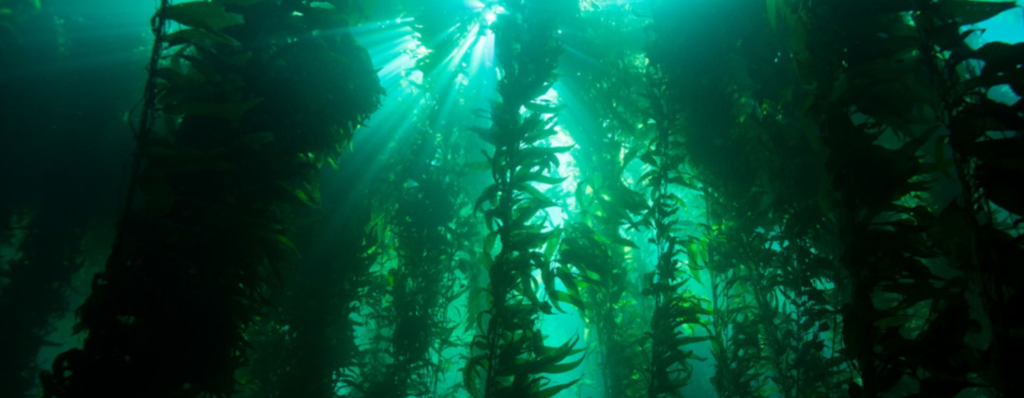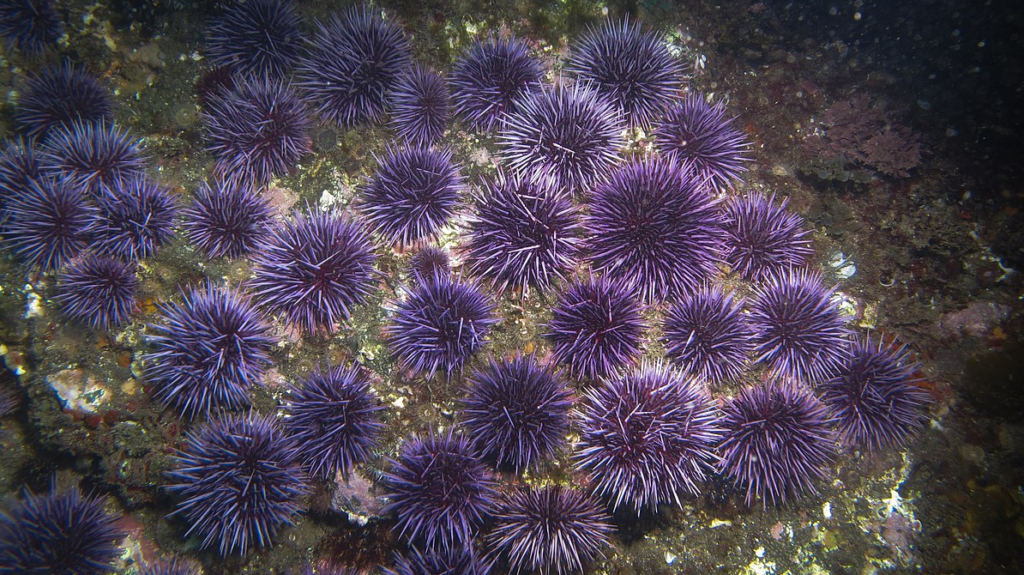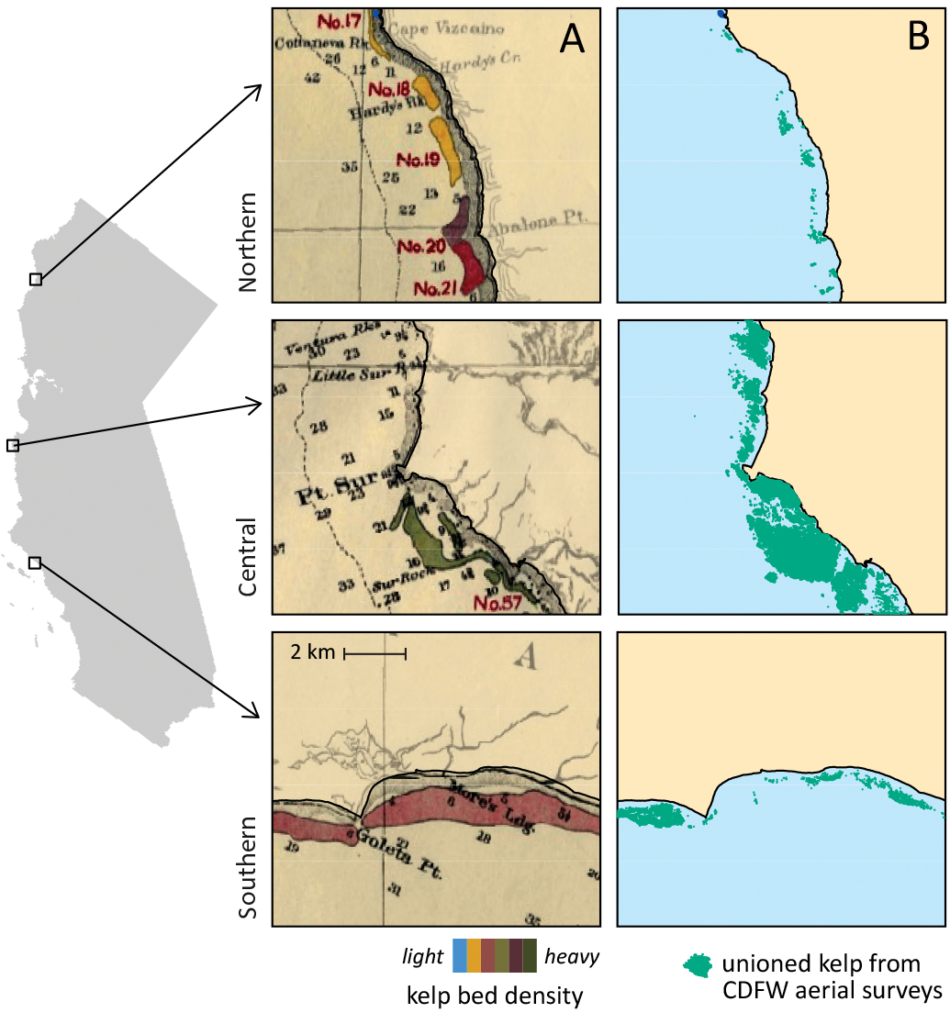Nicholson TE, McClenachan L, Tanaka KR, Van Houtan KS (2024) Sea otter recovery buffers century-scale declines in California kelp forests. PLOS Climate 3(1). https://doi.org/10.1371/journal.pclm.0000290
Kelp Importance
Kelp forests are an important, yet underappreciated ecosystem that cover a quarter of Earth’s temperate and arctic coastlines. They provide many beneficial services for the ocean that mimic those of land based forests. This includes providing:
- Habitat refuge
- Carbon capture
- Nutrient recycling
- Increased biodiversity
- Reduced erosion

However, much like other habitats around the globe, multiple pressures are threatening these forests. This includes marine heat waves which are unnaturally warm waters that last for extended periods of time. Kelp can be harmed by this warm water, damaging their cells and reducing their ability to successfully reproduce. Next, sedimentation is the settling of sediment on the seafloor. The problem comes from too much sedimentation covering up the bedrock which is needed for kelp to properly anchor and grow. Lastly, sea urchins are a natural predator of kelp. Too many of them can wipe out large areas of kelp, diminishing the beneficial services kelp provides to the area.

As these factors continue to change kelp forest coverage, Nicholson et al. (2024) created a historic assessment of the forests along the California coast. This will document past and present forest coverage to inform future restoration efforts. Thanks to US government ship-based surveys in the early 20th century, they compared the results to modern coverage to understand changes and identify environmental factors that best explained these changes.
Loss and Growth

Overall, kelp forest coverage did not significantly change from 120.4 km² in 1910 to 112 km² in 2016 along the California coast. This amounts to a loss of 8.4 km² coverage or -6.9%. However, this number does not accurately capture the total losses in the region as the initial 1910 survey noted kelp coverage was at a 50 year low at the time.
Looking at localized changes, significant differences were found. Northern California experienced a reduction of 63% (8.1 km²) while the southern area lost 52.1% (18.3 km²) of its kelp coverage. Central California made up for the losses, with a 57.6% (19.7 km²) increase.
These results were found to be primarily driven by southern sea otter (Enhydra lutris nereis) presence. The greater their presence, the more resilient kelp were to detrimental factors. Without sea otters, marine heat waves and sedimentation of the seafloor corresponded most to forest decline.
Northern California
Kelp forest loss in Northern California only occurred within the last 10 years. It started with a marine heat wave in Alaska that spread south to California from 2013 to 2015. Bull kelp (Nereocystis luetkeana) is the primary kelp in the region and is highly susceptible to extreme heat. Followed by an explosion of purple sea urchin populations, the forest quickly gave way to urchin barrens.
Southern California
Rapid development of agriculture in the early 1900s increased sediment entering the coastal system by 10 times. This smothered established forests and removed potential substrate for newly established individuals. In the mid 1900s, this pressure shifted to port excavations, and poor wastewater management as human populations dramatically expanded in the area.
Central California
As opposed to the other areas, Central California experienced kelp forest expansion due to sea otter presence. Sea otter reintroduction has been most successful in this region, demonstrating the importance of this species to this ecosystem.
Kelp Future
As our oceans continue to change, understanding historical trends is important for future conservation efforts to restore natural habitats. Along the California coast, kelp forests have been disappearing in regions exposed to marine heat waves, sedimentation, and unchecked urchin populations. However, the reintroduction of sea otters, a keystone species of kelp forests, has helped save and even expand local forests in Central California. This provides important blueprints on how to recover lost kelp coverage and make them resilient to future pressures.
I am a recent MSc graduate in marine biology from Bangor University, where I studied population dynamics of elasmobranchs off the coast of Wales. My interests lie in ecological data analysis to understand environmental processes and identify natural patterns. However, nothing beats being in the field and interacting directly with the marine life.

